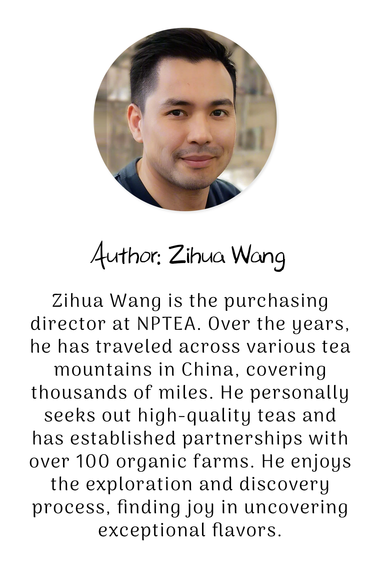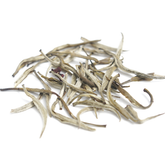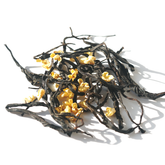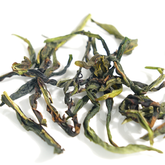What Is Spring Tea? Which Harvest Season Makes the Best Tea?
As someone who has been working in Chinese tea sourcing for many years, I am often asked one common question: “During the four seasons of the year, which tea harvest produces the best quality tea?”
Many people assume that tea from all seasons tastes the same. But in reality, the same tea plant harvested in different tea picking seasons will produce completely different flavors. Among them, spring tea is the most celebrated.
Spring tea is the first harvest after tea plants rest throughout the winter. The leaves are packed with nutrients, the taste is fresh, sweet, and full-bodied. That’s why it is considered the best tea of the year.
In this article, I will help you understand the concept of tea seasons, the unique characteristics of spring tea, how it compares with summer tea, autumn tea, and winter tea, and most importantly—how to identify and choose the best-quality Chinese loose leaf tea for yourself.
The Concept of Tea Seasons
Before diving into the exceptional quality of spring tea, let’s first understand the concept of tea harvest seasons.

Tea farmers divide the yearly harvesting cycle into four main tea seasons. This seasonal variation directly impacts the tea’s flavor, aroma, nutrients, and overall quality. That’s why the concept of “tea season” is a fundamental benchmark for judging tea quality, tea pricing, and flavor characteristics.
The four main tea harvests are:
-
Spring Tea (春茶): late March to May
-
Summer Tea (夏茶): June to July
-
Autumn Tea (秋茶): August to October
-
Winter Tea (冬茶): November to December (in certain regions)
Because of these natural seasonal changes, the same type of Chinese tea—whether green tea, oolong tea, or black tea—will taste completely different depending on the season it was harvested.
What Is Spring Tea?
In the tradition of Chinese tea farmers, spring tea marks the beginning of the year’s tea production. It refers to the first flush of young buds and leaves sprouting after a long winter rest.

The harvest usually takes place from March to May, but due to China’s vast geography and different climates, the exact timing varies. Southern regions harvest earlier, while northern or high-altitude tea farms harvest later.
The Golden Standard: Qingming Festival(清明节)
In the Chinese tea world, one of the most important seasonal markers for spring tea is Qingming Festival (April 4–6 in the Gregorian calendar). It divides spring tea into two categories:
-
Pre-Qingming Tea (明前茶 / Pre-Qingming Tea) – harvested before Qingming Festival
-
Post-Qingming Tea (明后茶 / After-Qingming Tea) – harvested after Qingming Festival
Pre-Qingming spring tea grows very slowly in the cooler weather, which allows nutrients to accumulate in the leaves. As a result, it is extremely rare, delicate, and flavorful. It is often regarded as the most precious and expensive green tea of the year, prized for its fresh sweetness and smooth texture.
The Taste of Spring Tea
The unique value of spring loose leaf tea is best expressed through its flavor profile. Compared with summer tea or autumn tea, spring tea offers four outstanding sensory advantages:
Freshness and Natural Sweetness (“Spring Fresh”)
The first sip of spring tea brings a lively, refreshing taste, like biting into tender spring buds. It’s sweet, clean, and has almost no bitterness.
Thick and Full-Bodied Liquor (“Rich Mouthfeel”)
The tea soup is thick and smooth, coating the tongue like silk. This gives spring tea strong endurance over multiple infusions.
Lasting Floral and Bud Aroma
High-quality spring tea is rich in natural floral notes and a distinctive “bud aroma” from the fine hairs (trichomes) on the young leaves. The fragrance lingers in the mouth and nose long after drinking.
Quick and Long-Lasting Aftertaste
After swallowing, a cooling sweetness (回甘) rises in the throat, staying for a long time. This is one of the most pleasurable features of Chinese spring tea.
Why Is Spring Tea Considered the Best?
Maximum Nutrient Accumulation
During winter dormancy, tea plants store essential nutrients like amino acids, tea polyphenols, caffeine, and pectins. These compounds give spring tea its sweet, rich, and fresh taste.
Natural Growing Conditions
Early spring has cooler weather and fewer pests, so farmers rarely need pesticides. This makes spring tea leavesnaturally cleaner and purer.
Slow Growth in Cool Temperatures
Low temperatures slow down the growth of tea buds, creating a favorable balance of flavor compounds:
-
High Amino Acids (Umami & Sweetness)
-
Low Polyphenols (Bitterness & Astringency)
This golden ratio results in tea that is sweet, smooth, and refreshing without harsh bitterness.
👉 In summary: Spring tea = Winter dormancy + Slow growth + Pure environment → Best taste, best nutrition, best quality.
How to Identify Spring Tea
As a tea sourcing manager, knowing how to identify spring tea is critical. The price difference is huge: summer tea can cost half as much as spring tea. For regular tea drinkers too, being able to distinguish spring tea from other seasons ensures better value.
Here are the key points:
-
Shape and Weight: Spring tea leaves are plump, tight, and heavy. Summer tea looks lighter, looser, and elongated.
-
Color and Fine Hairs: Spring tea is glossy and vibrant (green teas are emerald, black teas are shiny dark). Look for fine white hairs (trichomes), which indicate tenderness and high quality.
-
Aroma: Spring tea smells fresh, floral, and clean. If you notice coarse grassy or sunburnt smells, it’s likely not spring tea.
-
Liquor Texture: Spring tea brews thick, smooth liquor with strong mouthfeel, unlike the thin wateriness of summer tea.
-
Taste: Sweet, fresh, with quick aftertaste. If it’s bitter and harsh right away, it’s summer tea.
-
Infused Leaf Softness: Brewed spring tea leaves are soft, thick, and even. Summer leaves are tougher, thinner, and coarser.
Which Tea Season Produces the Worst Quality?
Among the four tea seasons, summer tea (June–July harvest) is widely considered the lowest in quality. Here’s why:
High Polyphenols → Strong Bitterness
Intense sunlight forces the plant to produce more polyphenols, making tea taste bitter and astringent.
Low Amino Acids → Loss of Sweetness
Rapid summer growth consumes amino acids, so the tea loses its natural sweetness and becomes thin in flavor.
More Pesticides → Higher Safety Risks
Warm, humid summer weather increases pests and disease. Farmers may use pesticides, raising concerns about chemical residues in summer tea.

👉 Flavor profile: Summer tea is usually bitter, coarse, less sweet, and lacks complexity, making it the least desirable.
Autumn and Winter Teas
In contrast, autumn and winter teas (especially oolong teas like Phoenix Dancong or Tieguanyin ) are highly valued for their aromatic qualities.
-
Spring = Strong Liquor (rich, thick, full-bodied tea soup)
-
Autumn/Winter = High Aroma (floral, fruity, and sharp fragrance)
That’s why oolong lovers often prefer autumn tea for its fragrance, while spring tea is prized for its body and freshness.
Special Exception: Oriental Beauty Tea
One famous exception to the “summer tea is low quality” rule is Oriental Beauty Tea, a unique Taiwanese oolong tea.
-
It must be harvested in summer (June–July).
-
Its unique honey-like aroma comes from being bitten by tiny insects called tea green leafhoppers.
-
This natural reaction makes the leaves produce sweet, fruity, honey-like compounds.
-
Because leafhoppers cannot survive in pesticide-heavy environments, true Oriental Beauty Tea is naturally pesticide-free.
Flavor profile: Rich, sweet, honeyed, with peach or ripe fruit notes—no bitterness.
Buying Loose Leaf Tea: Practical Tips
When purchasing Chinese loose leaf tea, keep in mind:
Choose Reliable Brands
Buy from reputable tea brands or vendors. Labels on tea season (“spring tea”, “autumn tea”) are not always accurate.
Don’t Blindly Trust Packaging
Seasonal or origin labels may be exaggerated. The most important test is your own taste.
Always Try Samples First
If a tea is expensive, buy a small sample before committing to a full-size package.
👉 Remember: Labels are just references. The real value is in your personal taste experience.
Conclusion: Understanding Tea Seasons
Tea is generally harvested four times a year: spring, summer, autumn, and winter.
Spring tea is the best overall—fresh, sweet, smooth, and full of nutrients.
Summer tea is the lowest quality—bitter, coarse, and sometimes high in pesticide risk.
Autumn and winter teas are most famous for their high fragrance, especially in oolong teas.
As a consumer, don’t blindly trust “spring tea” labels. Many foreign tea sellers cannot truly distinguish it. Instead, rely on your own tasting experience. And if the price is high, always start with a sample pack.That way, you’ll find the best Chinese tea that matches your taste, without being misled by marketing.
SEE MORE ABOUT TEA
If you are a beginner about Chinese tea:
Basic-Guide-to-Chinese-Tea
If you have questions about selecting tea:
Learn-more-about-chinese-tea
If you have questions about the benefits of tea:
Health-benefits-of-chinese-tea
If you have questions about brewing tea:
How-to-brew-loose-leaf-tea






